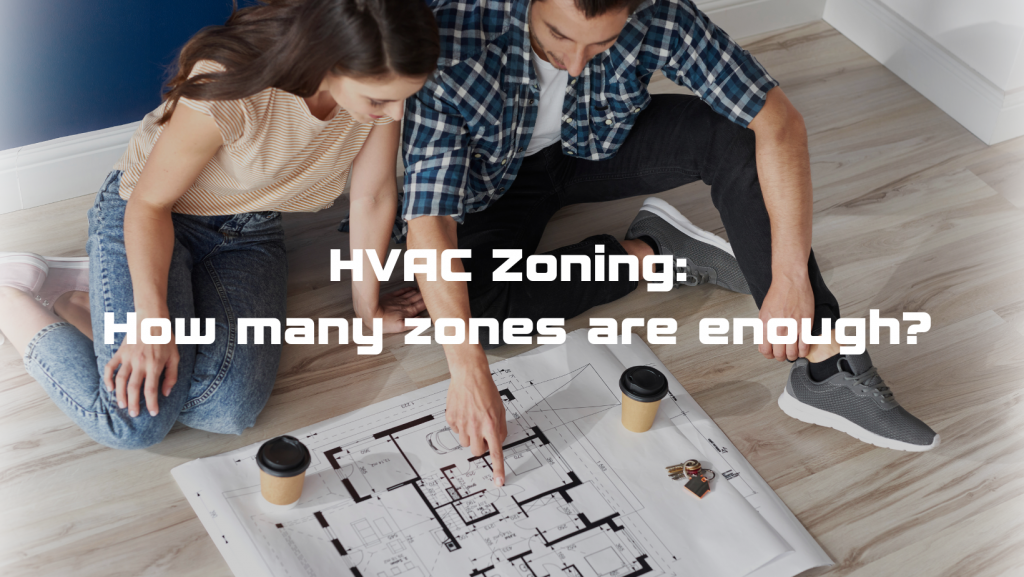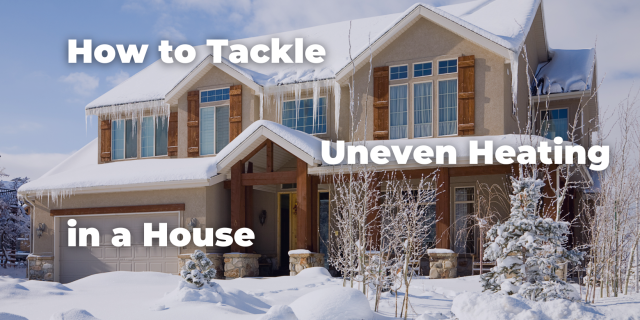HVAC Zoning: How Many Zones are Enough?

Nowadays, we face many ways to improve home comfort, but in looking at those options, there are strong opinions. The one often overlooked solution is the simplest because it works with the system you already have in place – HVAC Zoning.
Home zoning, also known as HVAC Zoning, is one of several ways to manage our homes’ comfort better. The premise is simple – by using dampers installed inside the existing ductwork of a home’s HVAC system, “Zones” of airflow are established, each with its own thermostat.
Multiple thermostats in one house are nothing new. You may be familiar with boiler systems where homes are broken up into control areas, each with a separate thermostat. The same can be applied to forced air or central heating and cooling systems. There are some limitations compared to boiler heat, such as the number of zone thermostats. With a boiler system, some places have thermostats placed in every room of the house, however, with forced air, this could overwork and cause damage to the blower unit, so the number of thermostats needs to be limited.
The determining factor on the number of zones and how many thermostats a house can have is capacity. Let’s look at this for a moment.
The first thing to determine is the size of your system and the number of registers.
- First, a quick definition: A supply register is a register that blows air out rather than sucks air; this can be tested with a tissue when the furnace blower is running.
- As a general rule, the average house having a 2.5-ton or 3-ton air conditioner installed would typically need 10-12 supply registers, a 3-ton air conditioner would need 12-14 supply register openings.
- These register openings assume a 6″ round pipe attached as normal bigger pipes would allow for fewer supply registers.
- Smaller pipes would need more supply registers. If you have fewer than the recommended supply register openings, you should limit the number of zones.
Next, determine if your existing system is multi-stage or single-stage.
- If it’s multi-stage, the maximum number of thermostats would be four (25% registers per zone),
- If it’s the single-stage, the maximum number of thermostats should be three (35% registers per zone).
- If we started with the proper amount of ductwork, the result of a 25-35% breakdown works with most furnace blower limits for safe equipment operation.
Once you’ve determined the maximum number of zones you can have, determine how many you should have.
Try to think about how the house is used and group rooms based on similar use patterns to achieve this 25-35%. If there are few trees outside to shade the house or you are in southern or desert climates, consider an east/west approach so that as the sun moves around the house, the air is diverted to handle the way it warms up different sections. If there is an upstairs and downstairs or a basement, consider grouping based on the floor as well as east/west, and if you are in a northern climate, consider the wind direction with the cold northern winds and use a north/south rather than an east/west.
General rules aren’t a substitute for skilled knowledge, but they can give us ideas for ways we can be smart with our homes. Every home is unique, and a skilled HVAC contractor can offer solutions that will work with your home and help you optimize your HVAC system with HVAC zoning to meet your comfort needs. Home zoning or HVAC Zoning is an investment that can make a night and day difference in home comfort.
Interested in learning more? Find a local HVAC professional in your area today!






